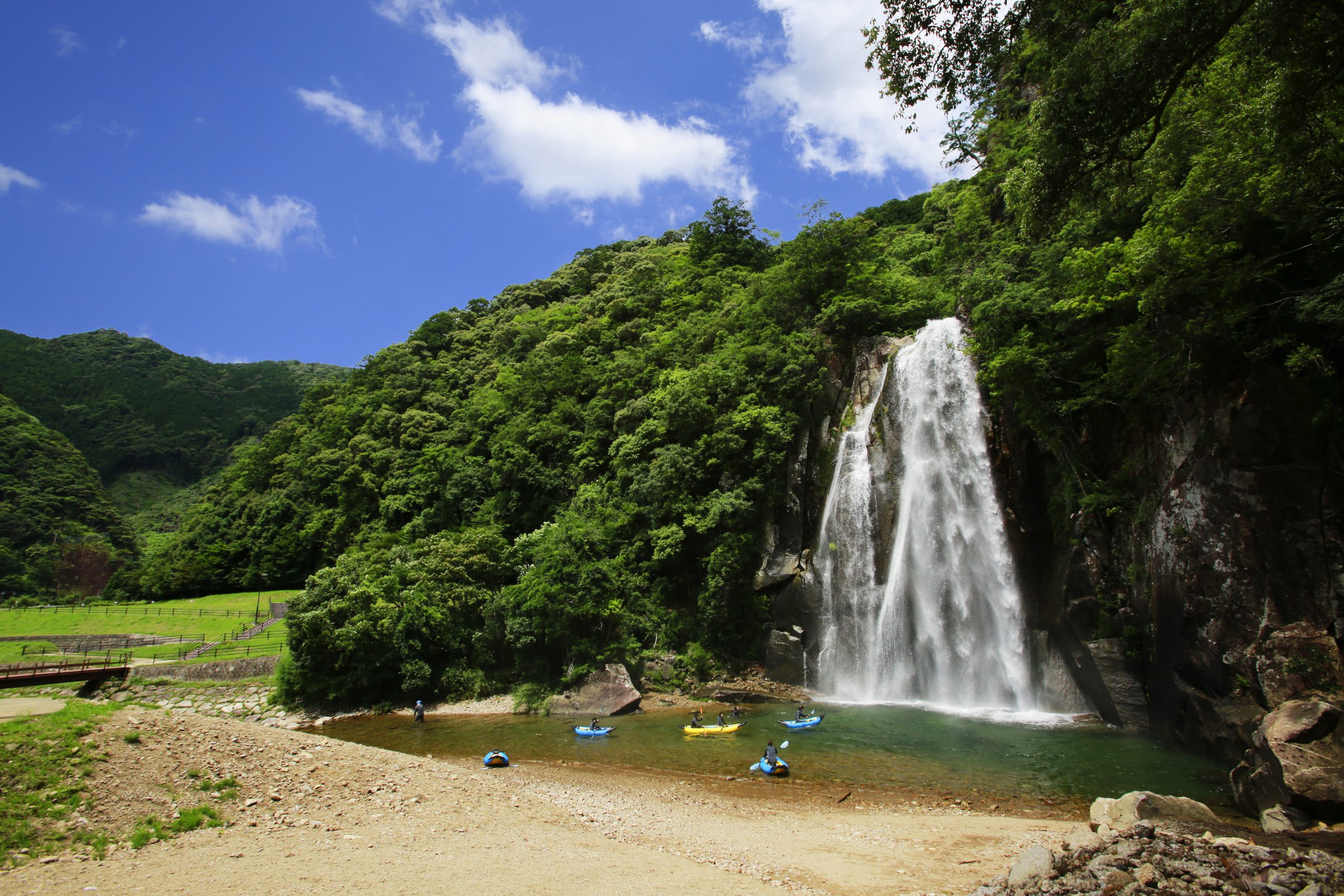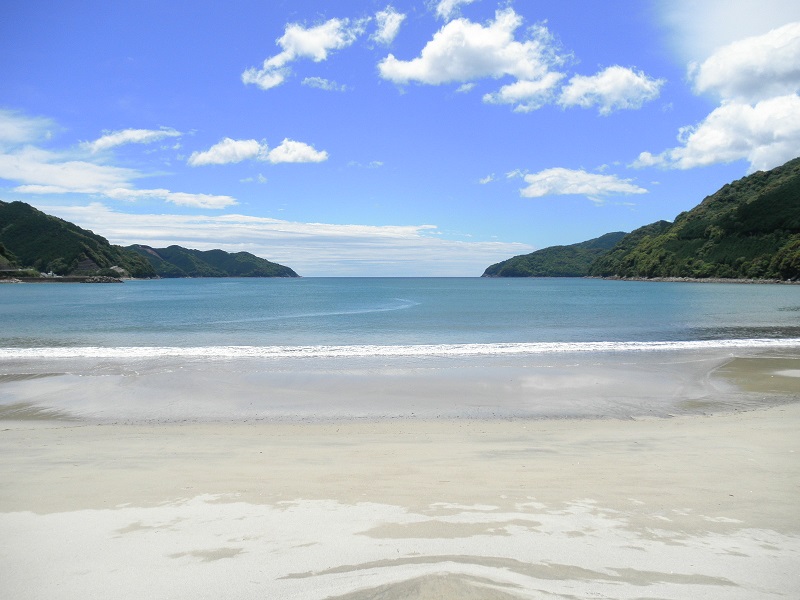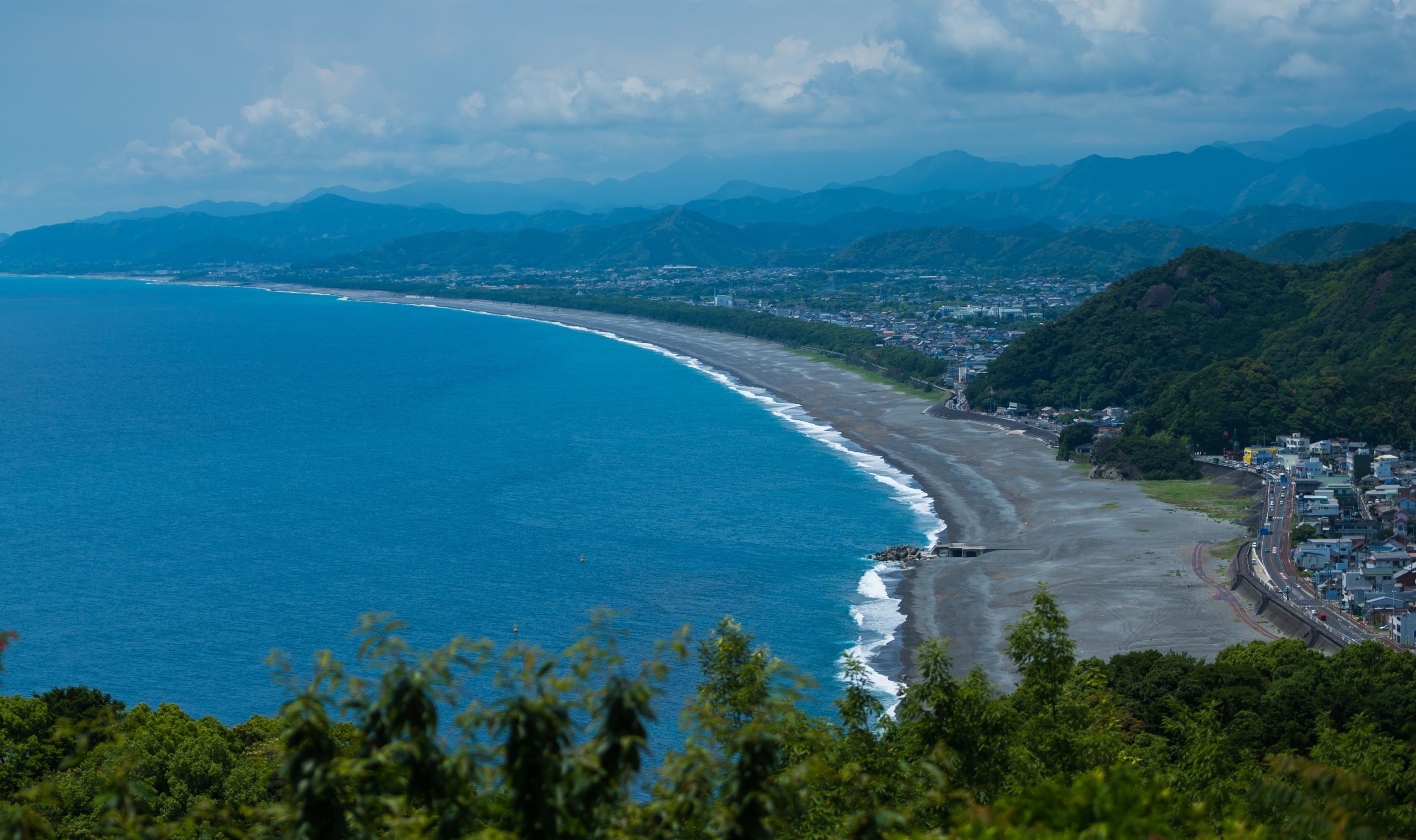Matsumoto-toge Pass
Update:
Kumano City
“Kumano Kodo Iseji connects Ise-jingu Shrine with Kumano Sanzan (Three Grand Shrines of Kumano) composed of Kumano Hongu Taisha Shrine, Kumano Hayatama Taisha Shrine and Kumano Nachi Taisha Shrine. It is a road for pilgrims going through several mountains to visit Kumano Sanzan.
Matsumoto-toge Pass has the most attractive rocky walkway where I went through.”
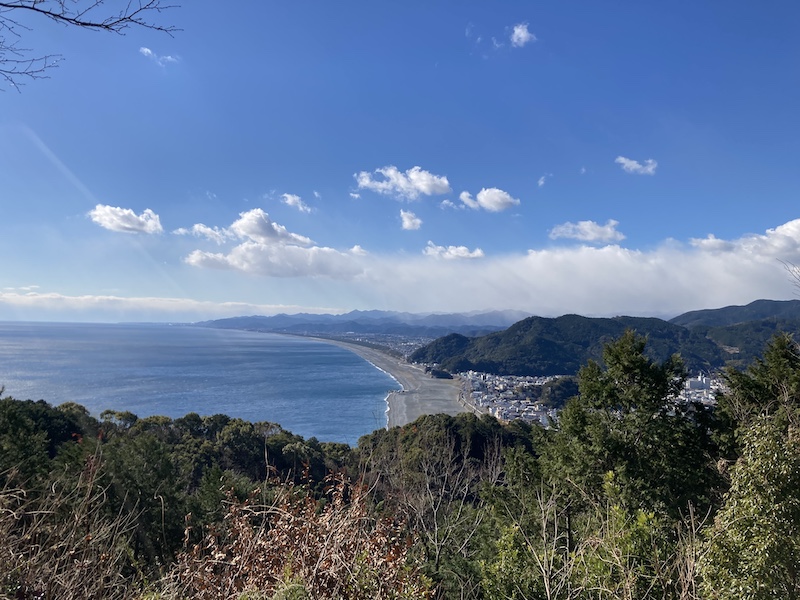
In this special report, I’m introducing attractions in Matsumoto-toge Pass.
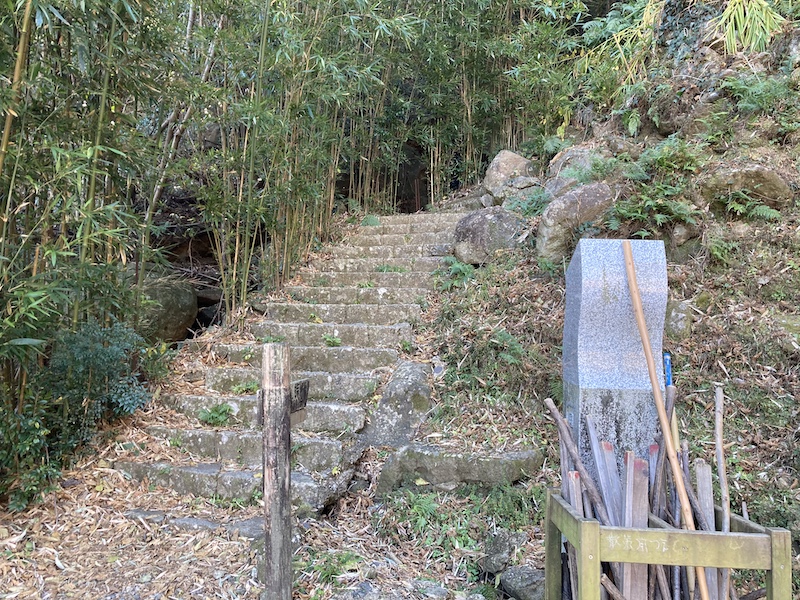
“I arrived at the entrance of Matsumoto-toge Pass.
Visitors can rent sticks here. As the stairs are numerous, if you have worries, be sure to rent a stick here. You can return the stick at the exit.”
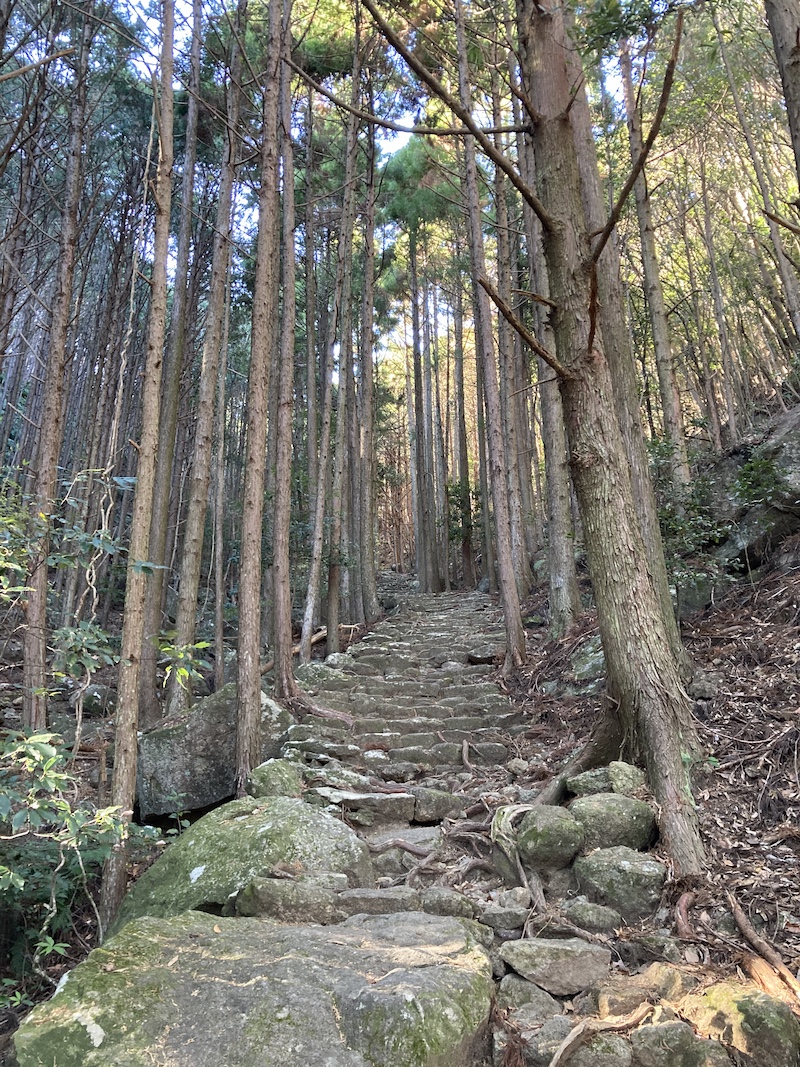
The rocky walkway appears.
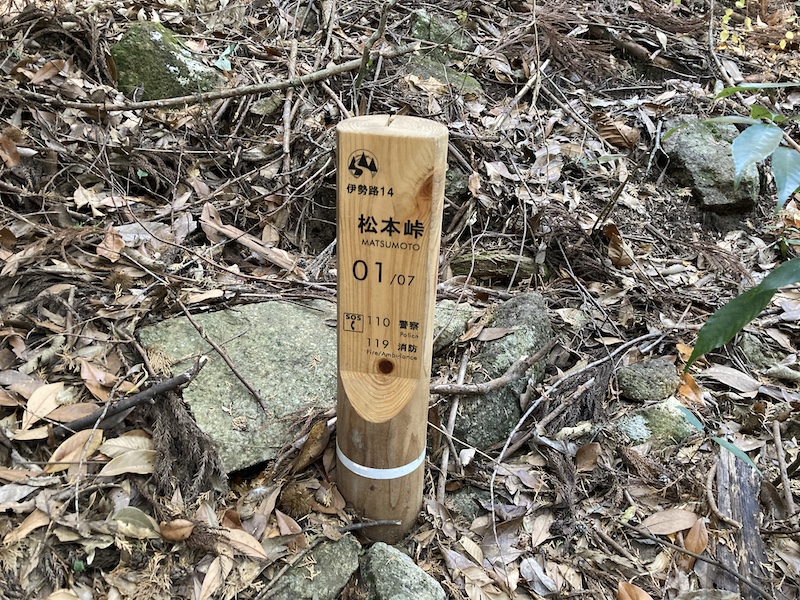
Each 100m a guidepost is set to verify your position. The road rises until the 3rd guidepost.
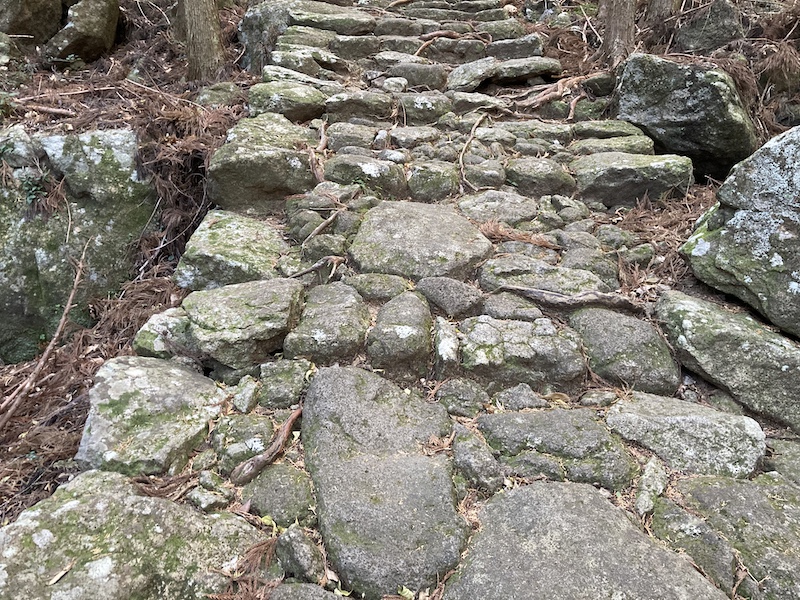
“The porphyritic granite which makes up the rocky walkway is a product of frozen lava from Kumano Caldera volcano eruption about 15 million years ago and is very hard. Countless people walk on it during the years yet the walkway stay till today.
Higashi-kishu is a rainy area where earthy roads would be washed away by rainfalls. The rocks protect the road from rainfalls.”
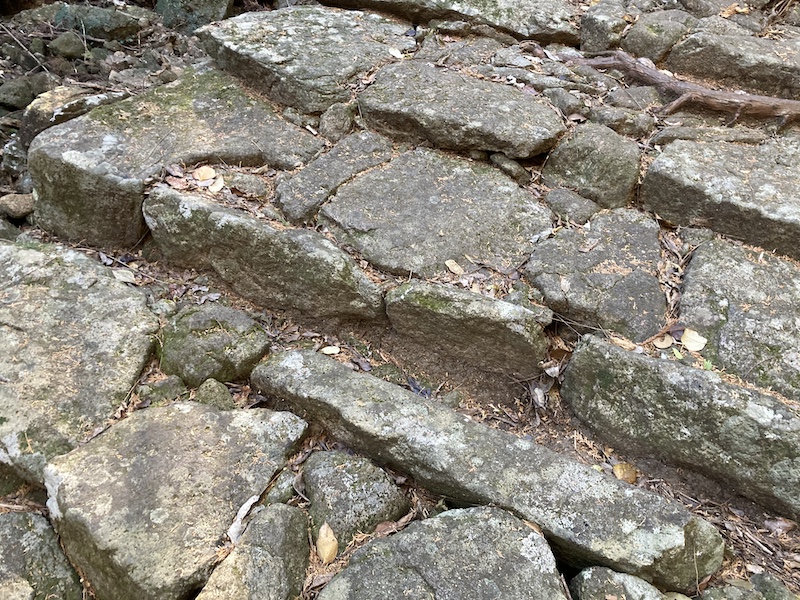
Ditches called Araikoshi (Ford) are everywhere to reduce the shock of rainfalls. It is said that they got their name because people who went through Kumano Kodo washed their sandals in the ditches.
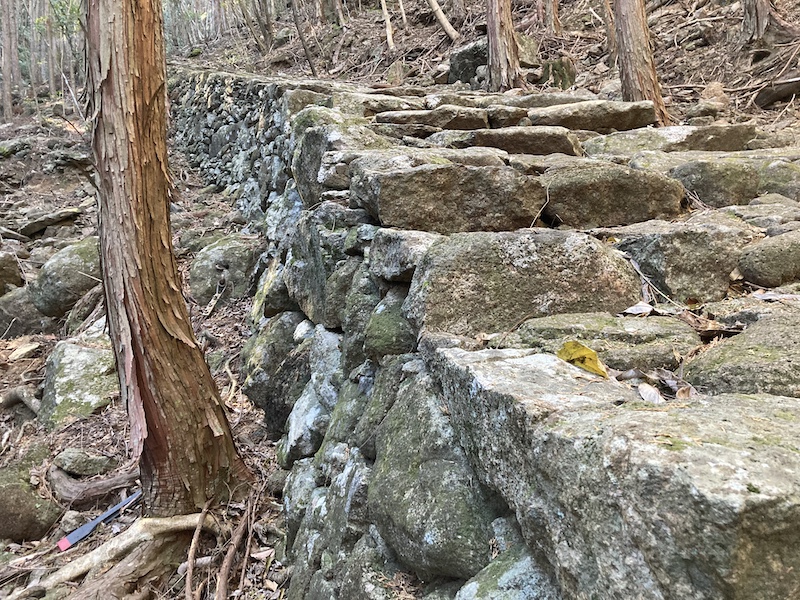
The river flows by the walkway, so we can see the section of rocky road. Rocks are posed in a pattern called “random masonry with raw rocks”, even earthquakes and storms can’t break it.
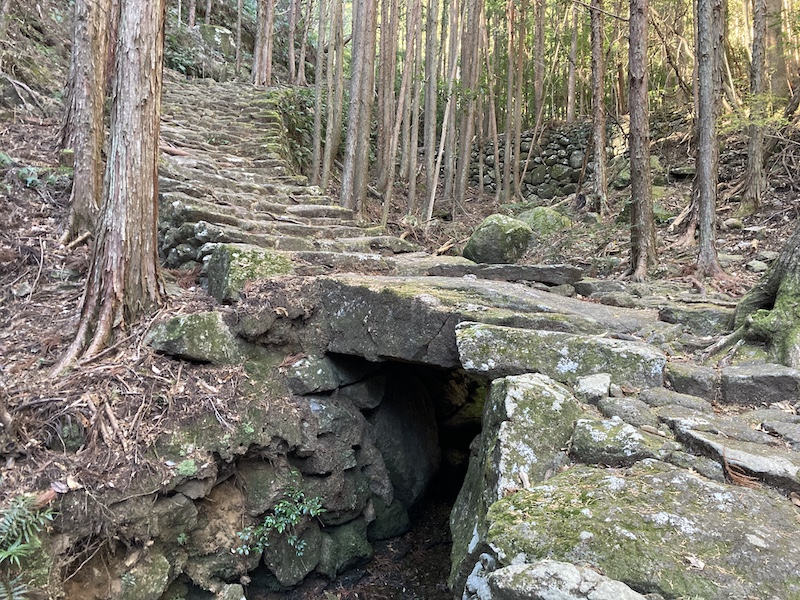
“Huge rocks serve as bridge.
I passed it easily, but consider that there was no machinery in ancient times, it must took very hard work to cut such huge rocks and pose them into a bridge.”
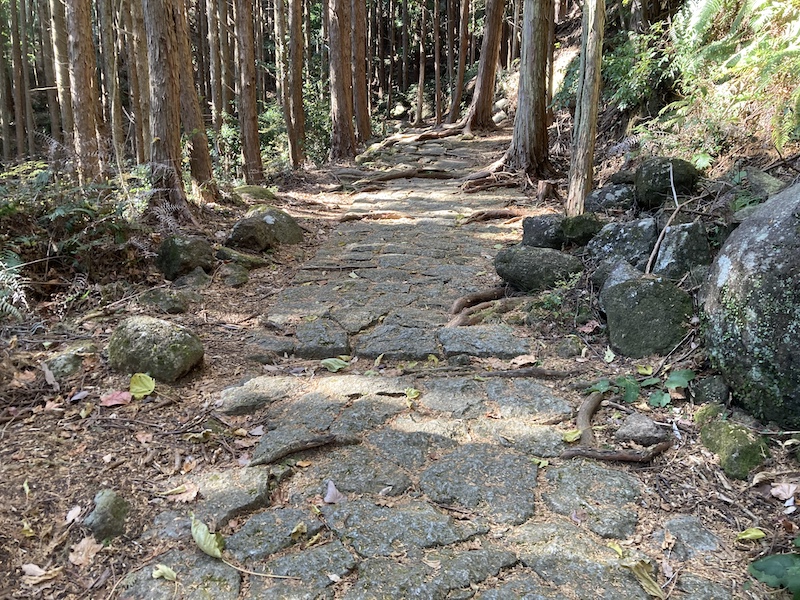
“After the steep stairs, keep advancing and we can see the rocky walkway with totally different pattern.
In the first year of Meiji period (1868), fishermen fought for tuna nearby here, and were forced to pave this road for local habitants as punishment for the turmoil.”
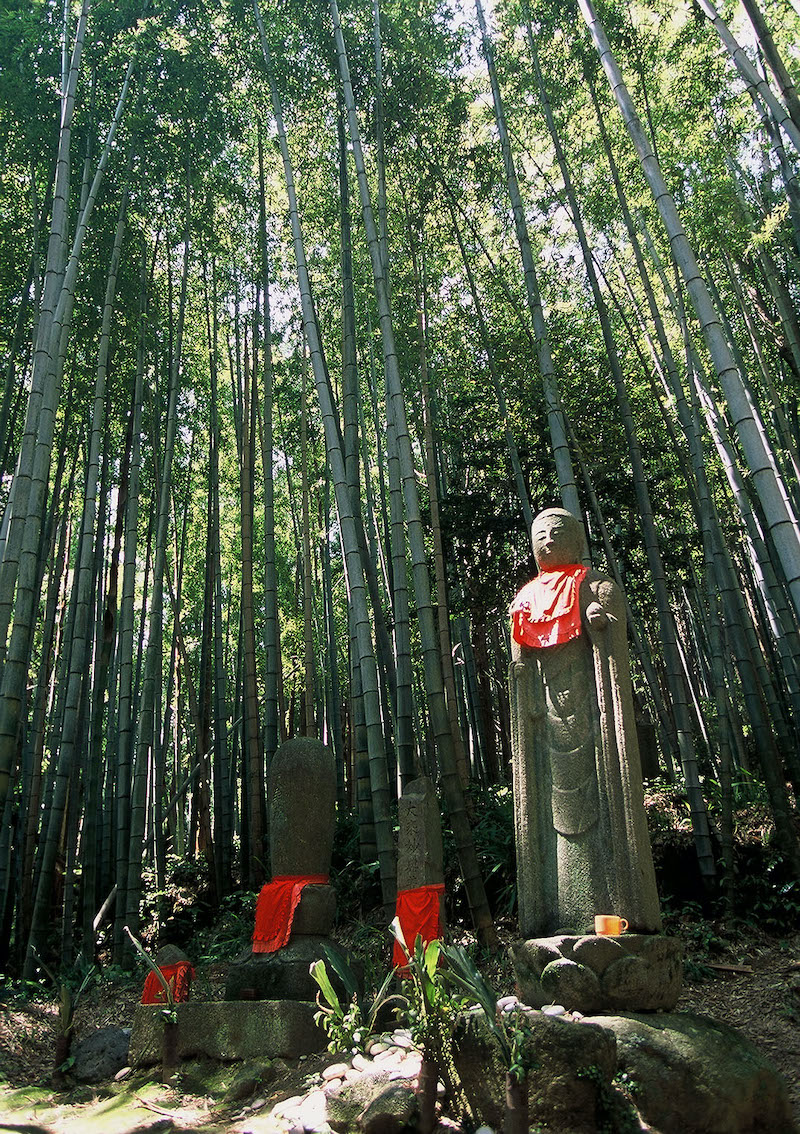
“I arrived at Matsumoto-toge. It took me about 30min from the entrance to here.
Before me was the grand statue of Jizo Buddha with merciful face.”
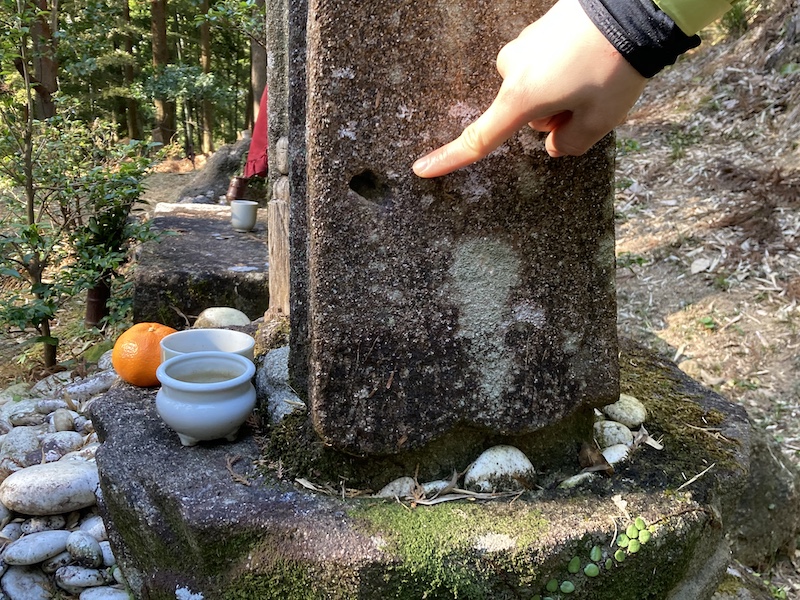
“The statue of Jizo Buddha has trace of being shot.
It is said that during Edo period, shotgun master Shinzaemon Oba went through Matsumoto-toge Pass in the morning. When he came back through the Pass again in the evening, he took the statue of Jizo Buddha in his way as ghost so he shot it because he had not seen it on his way the morning.
It seems that the statue was shot the very day it was posed!”
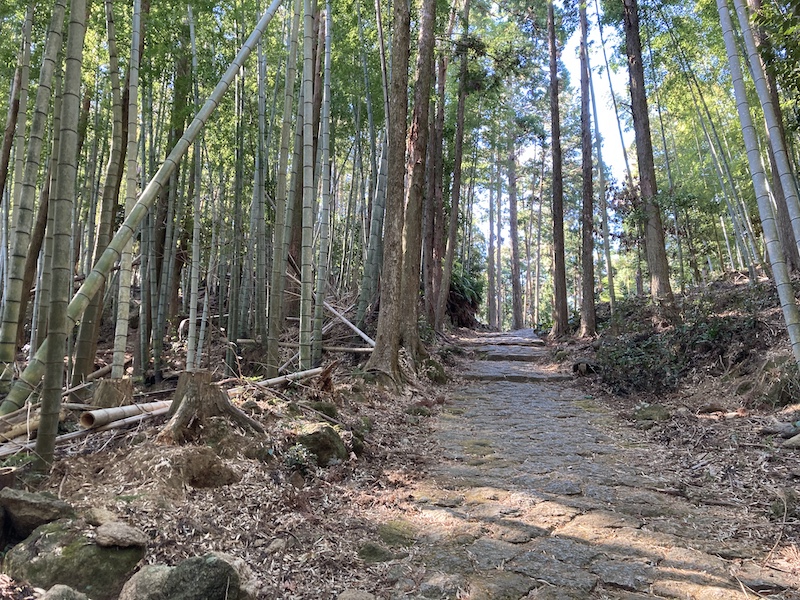
There are bamboos near the mountain top. There was a teahouse for visitors, as bamboo can be used both as basket and cup, it seems that the forest of bamboo appeared after the disappearance of teahouse.
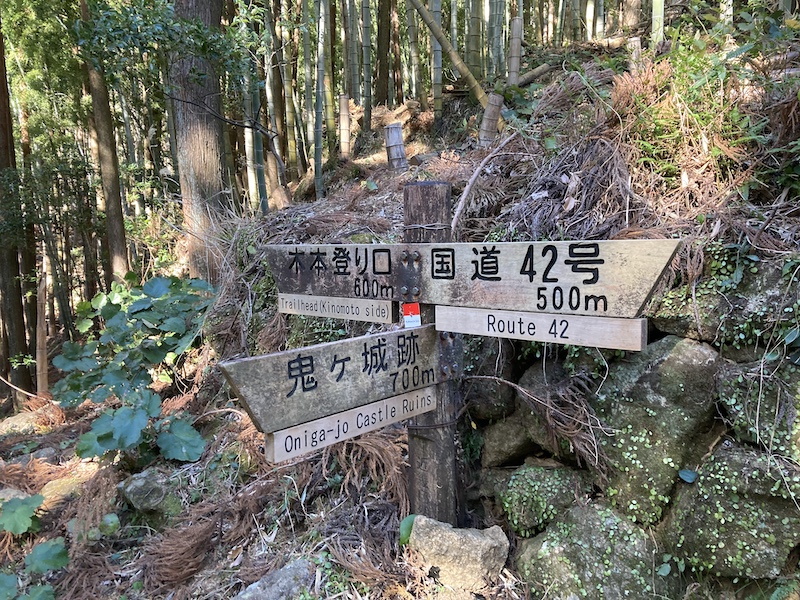
“Take a little longer trip before descending.
Walk in the direction of Onigajo relics.”
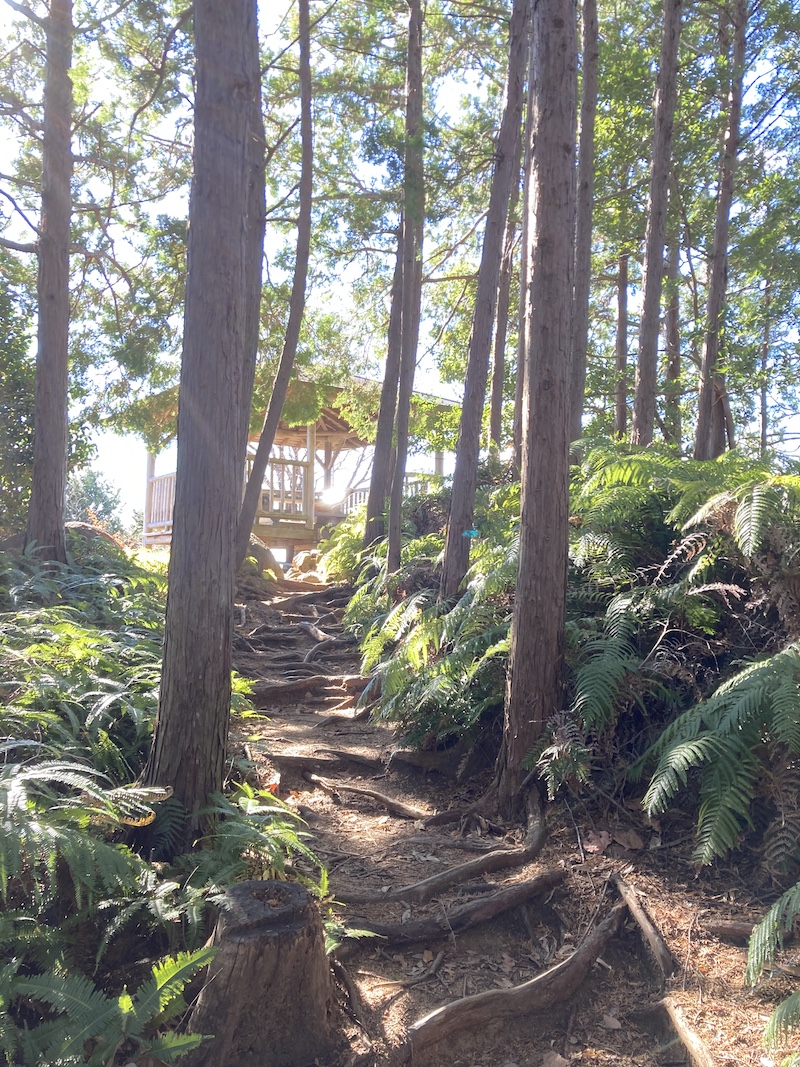
After root-showing road, I can see Azamaya. That’s my goal!

“From Azamaya you can overlook the scene of Shichirimihama shaped in an arc.
It’s really beautiful.”
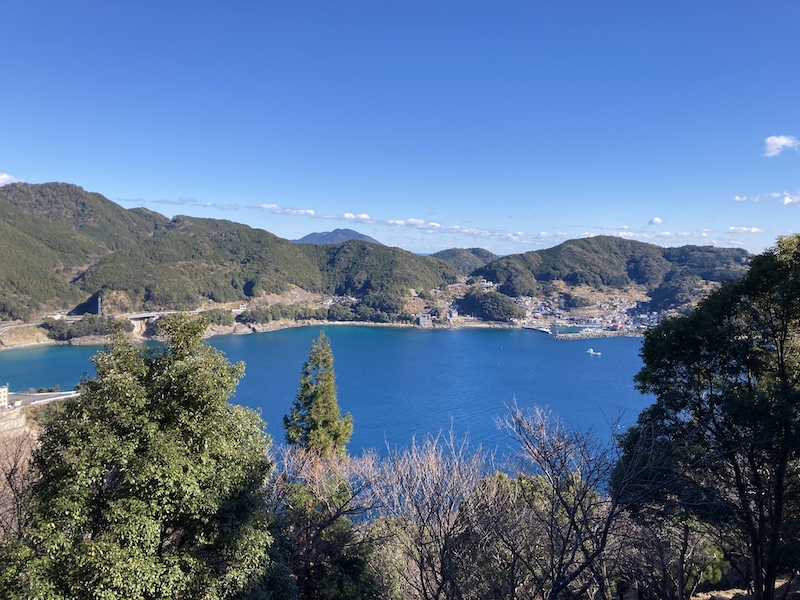
“To my north is the vast sea full of transparent water, the scene is beautiful.
Continue in this road to descend the mountain and you can get world heritage Onigajo.
This time I returned to the mountain top and descend towards Kinomoto entrance.”

In the exit of Matsumoto-toge Pass there is Onigajo walking tunnel, through which you can get National Route 42. Before the tunnel was completed in July 1926, the Matsumoto-toge Pass served as an important road for local habitants in their daily lives.
Please come to wander in Matsumoto-toge Pass to feel history!


